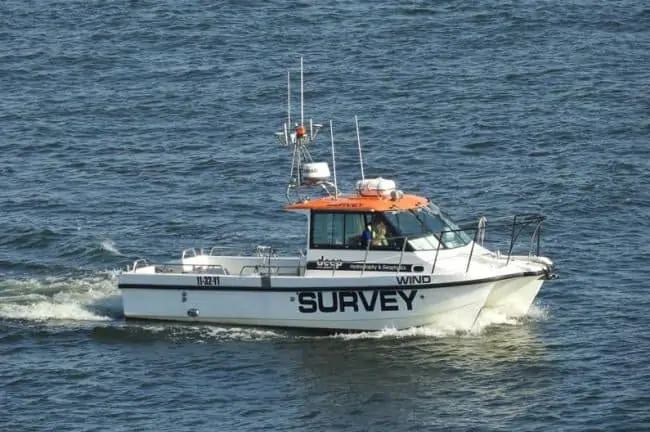Sea Machines Robotics’ SM300 autonomous control system has been selected by survey firm Deep BV for integration into one of its vessels. The SM300 will enable remote command and control of the vessel, including navigation and positioning, control of on-board auxiliary systems and sensors, and ship-to-shore data transmission. Deep BV will command the vessel, which will operate in multiple regions of the Wadden Sea, from its Amsterdam office.
The SM300 can be installed into new vessels or used to retrofit existing ones, providing the benefits of state-of-the-art autonomous technology without the need to purchase a new vessel. Multiple vessels can be remotely monitored and commanded from any ship- or shore-based location with network connectivity. This reduces risk associated with working in dynamic marine environments and allows companies to utilize their technical experts across multiple concurrent projects.
The newly autonomy-enabled vessel with survey the Wadden Sea, a challenging shallow body of water with tidal flats and wetlands located north of The Netherlands. Deep operators will command and control the autonomous vessel and all on-board payloads (including survey sonars, hydrophones, winches, cranes and davits) from its shoreside Survey Control Room, which has been equipped to facilitate several multi-beam surveys simultaneously. All collected data will be transferred from the vessel to the control room via 4G and satellite connection. The combination of Sea Machines’ autonomous vessel technology and the Survey Control Room will enable Deep to transition from minimally manned missions to completely unmanned missions in the near future.
Other advantages of autonomous vessel control systems such as the Sea Machines SM300 include:
- Enabling personnel to focus less on recurring and repetitive tasks, and more on specialist skill areas
- Dynamically interfacing navigational control with survey software
- Improving vessel tracking precision over planned lines
- Enhancing project planning with predicted on-water mission characteristics
Michael G. Johnson, CEO of Sea Machines, commented: “Sea Machines systems are an ideal fit for commercial marine operations that require high levels of predictability, productivity and safety. For these reasons, hydrographic survey is an exemplary use case for our autonomous-command and remote-helm control technologies. With Sea Machines installed on board, Deep will benefit from obtaining higher-quality data, more safely and at a more efficient rate with less data overlap. It’s an honor to serve innovative leader Deep with technology that helps them meet their goals and advance our industry.”
Jurgen Beerens, CCO of Deep BV, said: “The purpose of our Survey Control Room is to offer our clients many possibilities like ad hoc surveys, simultaneous conducted surveys operated by only one survey crew, and multi-purpose use of vessels already available in the field. Besides these unparalleled flexibility advantages, it offers a time-saving option to increase efficiency and control costs towards a more sustainable future. With Sea Machines integrated on our vessel, we will soon begin to transfer tasks from the vessel to the safe working environment of the office. As well as improving safety, we will gain flexibility, continuity and quality, and we will reduce risks and our carbon footprint.”



















